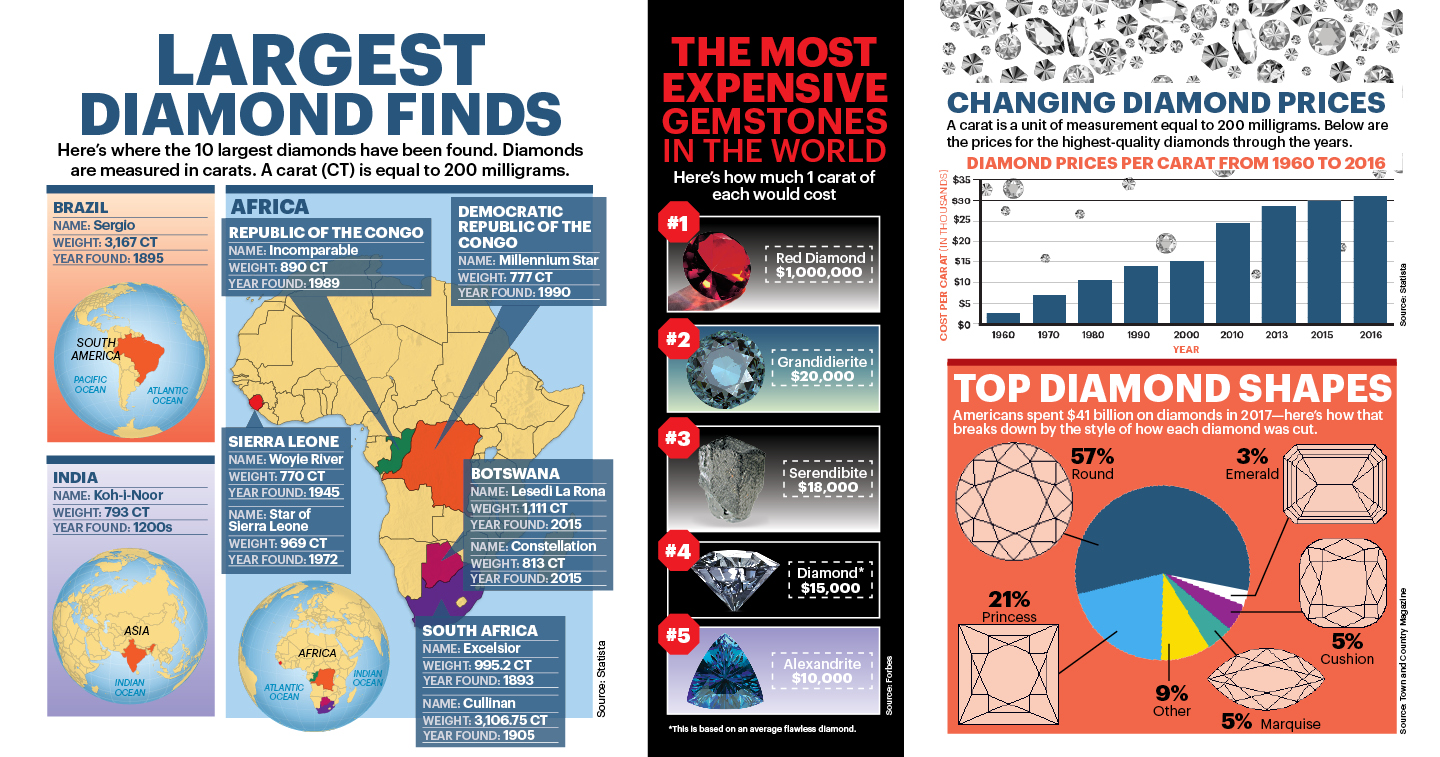For thousands of years, people have loved diamonds. The precious gems are one of the hardest materials on Earth. Rough diamonds come out of the ground looking like dull glassy rocks. But once they are cut, polished, and carved with flat sides called facets, the brilliant gems shimmer in the sunlight.
Their rarity makes diamonds expensive. But scientists just discovered a treasure trove of the gemstones. More than 1 quadrillion tons (That’s 10^15 tons!) lie deep below Earth’s surface. That’s 1,000 times more than previously thought.
Scientists figured this out using seismic waves. Earth’s surface is constantly moving, which creates seismic waves. Scientists are constantly measuring the seismic waves. Much like X-rays that allow doctors to peer inside the human body, seismic waves reveal what lurks deep beneath Earth’s surface.
But you shouldn’t start digging for these diamonds anytime soon. “Everyone is excited because they think they might be able to get to them somehow,” says Josh Garber, a geologist at Penn State University. However, the gems are too deep for any drills to reach them.
In addition, the diamonds are trapped in a layer of molten rock called magma. In order for any of these diamonds to reach the surface, the magma would have to rush upward through a pipe of volcanic rock.
“The types of magmas that bring diamonds up to the surface take only a couple of hours,” says Garber. “We’ve never experienced it in human history, but it would happen quickly if we did.”


